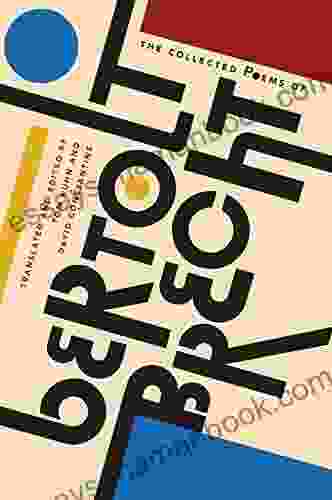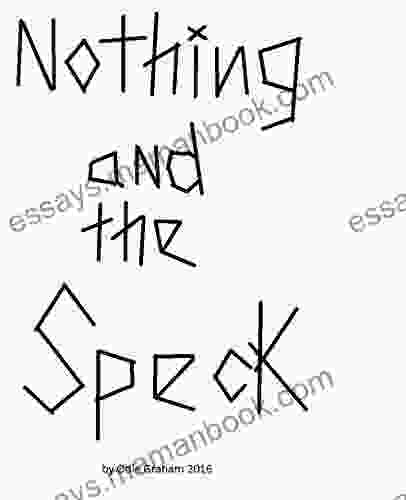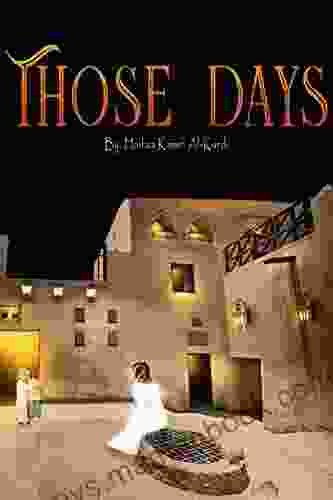Haiku: A Step-by-Step Guide and Workbook to Master the Art of Japanese Poetry

Haiku, a traditional form of Japanese poetry, has captivated readers for centuries with its brevity, simplicity, and evocative power. Composed of just three unrhymed lines, haiku capture fleeting moments, paint vivid images, and offer profound insights. While its structure may seem straightforward, mastering the art of haiku requires understanding its nuances and embracing its aesthetic principles.
This comprehensive guide and workbook is designed to provide aspiring poets with a step-by-step approach to writing compelling haiku. Through interactive exercises, detailed explanations, and insightful examples, you will delve into the intricacies of haiku and develop the necessary skills to craft your own evocative verses.
A haiku is composed of three lines with a specific syllable count:
5 out of 5
| Language | : | English |
| File size | : | 1819 KB |
| Text-to-Speech | : | Enabled |
| Screen Reader | : | Supported |
| Enhanced typesetting | : | Enabled |
| Print length | : | 35 pages |
| Lending | : | Enabled |
| Item Weight | : | 1.1 pounds |
| Dimensions | : | 6.73 x 0.59 x 8.98 inches |
- Line 1: Five syllables
- Line 2: Seven syllables
- Line 3: Five syllables
This strict structure serves as the foundation for haiku, providing a framework that focuses the poet's attention on capturing essential elements.
The core components of haiku include:
- Kireji (cutting word): A word or phrase that creates a break or pause in the poem, separating two distinct images or ideas.
- Kigo (seasonal reference): A word or phrase that alludes to a specific season, evoking the changing rhythms of nature.
- Yugen (profound mystery or depth): The subtle, unspoken meaning that lingers beneath the surface of the poem, inviting readers to contemplate its deeper significance.
Step 1: Observe and Immerse Yourself
Begin by observing your surroundings with a keen eye. Pay attention to the sights, sounds, smells, tastes, and textures of your environment. Let your senses guide you as you search for moments that evoke strong emotions or impressions.
Step 2: Capture a Single Moment
Haiku focus on a specific moment in time. Choose an experience or observation that you can encapsulate in a few concise lines. Avoid trying to tell a story or provide a complete picture. Instead, aim to capture a single, vivid impression.
Step 3: Find the Kireji
Locate the natural break or pause in your poem. This is where you will place the kireji, which will create a sense of tension and release. The kireji can be a punctuation mark, a change in perspective, or a juxtaposition of contrasting imagery.
Step 4: Include a Kigo
Consider incorporating a seasonal reference into your haiku. This will provide a subtle hint to the time of year and enhance the poem's connection to the natural world.
Step 5: Craft Evocative Language
Use vivid verbs, concrete nouns, and sensory details to create a multisensory experience for the reader. Avoid clichés and strive for original and unexpected imagery.
Step 6: Refine and Revise
Once you have a draft, step away from it and return later with a fresh perspective. Read your haiku aloud and listen to its rhythm and flow. Make adjustments to the word choice, line breaks, and syllable count until you achieve a smooth and harmonious result.
This workbook provides a range of exercises to help you practice and refine your haiku writing skills:
Exercise 1: Sense Observation
Engage your senses and describe an object, place, or experience using vivid sensory language.
Exercise 2: Finding the Kireji
Experiment with different ways of creating a break or pause in your haiku. Explore the use of punctuation, perspective shifts, and contrasting imagery.
Exercise 3: Kigo Exploration
Identify seasonal references in your surroundings and incorporate them into your haiku to evoke a sense of time and place.
Exercise 4: Writing Complete Haiku
Using the techniques learned in the guide, write several complete haiku that capture fleeting moments and evoke profound emotions.
Exercise 5: Feedback and Discussion
Share your haiku with others and seek constructive feedback. Discuss the principles of haiku and explore different interpretations of your work.
Mastering the art of haiku requires patience, observation, and a deep appreciation for the beauty of simplicity. By following the principles outlined in this guide andworkbook, you will develop the skills necessary tocraft compelling haiku that resonate with readers. Remember to immerse yourself in the world around you, capture vivid moments, and strive for evocative language that conveys the profound in the ordinary. Through the haiku, you will discover a unique and powerful form of poetry that can both inspire and enlighten.
5 out of 5
| Language | : | English |
| File size | : | 1819 KB |
| Text-to-Speech | : | Enabled |
| Screen Reader | : | Supported |
| Enhanced typesetting | : | Enabled |
| Print length | : | 35 pages |
| Lending | : | Enabled |
| Item Weight | : | 1.1 pounds |
| Dimensions | : | 6.73 x 0.59 x 8.98 inches |
Do you want to contribute by writing guest posts on this blog?
Please contact us and send us a resume of previous articles that you have written.
 Top Book
Top Book Novel
Novel Fiction
Fiction Nonfiction
Nonfiction Literature
Literature Paperback
Paperback Hardcover
Hardcover E-book
E-book Audiobook
Audiobook Bestseller
Bestseller Classic
Classic Mystery
Mystery Thriller
Thriller Romance
Romance Fantasy
Fantasy Science Fiction
Science Fiction Biography
Biography Memoir
Memoir Autobiography
Autobiography Poetry
Poetry Drama
Drama Historical Fiction
Historical Fiction Self-help
Self-help Young Adult
Young Adult Childrens Books
Childrens Books Graphic Novel
Graphic Novel Anthology
Anthology Series
Series Encyclopedia
Encyclopedia Reference
Reference Guidebook
Guidebook Textbook
Textbook Workbook
Workbook Journal
Journal Diary
Diary Manuscript
Manuscript Folio
Folio Pulp Fiction
Pulp Fiction Short Stories
Short Stories Fairy Tales
Fairy Tales Fables
Fables Mythology
Mythology Philosophy
Philosophy Religion
Religion Spirituality
Spirituality Essays
Essays Critique
Critique Commentary
Commentary Glossary
Glossary Bibliography
Bibliography Index
Index Table of Contents
Table of Contents Preface
Preface Introduction
Introduction Foreword
Foreword Afterword
Afterword Appendices
Appendices Annotations
Annotations Footnotes
Footnotes Epilogue
Epilogue Prologue
Prologue Grace Daltrey
Grace Daltrey Louis Aragon
Louis Aragon Heather Hathaway
Heather Hathaway Erik Smith
Erik Smith Safiya Umoja Noble
Safiya Umoja Noble William C Foster
William C Foster Malina Pronto
Malina Pronto Don Didio
Don Didio Donald Revell
Donald Revell Geoffrey Peyton
Geoffrey Peyton Dalia Sharawna
Dalia Sharawna James Evans
James Evans Candace Camp
Candace Camp Ronald Eugene Isetti
Ronald Eugene Isetti Leslie Charteris
Leslie Charteris Edward Marteson
Edward Marteson Sarah Smarsh
Sarah Smarsh Hasan Raza
Hasan Raza Jay W Carender
Jay W Carender Morgan Moeller
Morgan Moeller
Light bulbAdvertise smarter! Our strategic ad space ensures maximum exposure. Reserve your spot today!

 Peter CarterThe Collected Poems of Bertolt Brecht: A Lyrical Journey into Human Nature...
Peter CarterThe Collected Poems of Bertolt Brecht: A Lyrical Journey into Human Nature...
 Tyrone PowellLiving Off The Grid: Embracing Freedom, Self-Sufficiency, and Connection with...
Tyrone PowellLiving Off The Grid: Embracing Freedom, Self-Sufficiency, and Connection with... Donovan CarterFollow ·4.9k
Donovan CarterFollow ·4.9k Jeremy MitchellFollow ·8.3k
Jeremy MitchellFollow ·8.3k Dwayne MitchellFollow ·17.2k
Dwayne MitchellFollow ·17.2k Christian CarterFollow ·19.6k
Christian CarterFollow ·19.6k Dallas TurnerFollow ·3.9k
Dallas TurnerFollow ·3.9k Derek BellFollow ·15.6k
Derek BellFollow ·15.6k Carter HayesFollow ·7.8k
Carter HayesFollow ·7.8k Norman ButlerFollow ·6.6k
Norman ButlerFollow ·6.6k

 Dean Butler
Dean ButlerBlack Widow 2024: A Comprehensive Guide to Kelly...
In 2024, Marvel...

 Gage Hayes
Gage HayesNothing and the Speck: An In-Depth Analysis of Yana...
Yana Toboso's works, particularly the manga...

 Stan Ward
Stan WardThe Best American Poetry 1997: James Tate
The Best American Poetry...

 Corey Green
Corey GreenThe Chance of Home: Exploring the Poetic Landscape of...
Immerse yourself in the evocative world of...
5 out of 5
| Language | : | English |
| File size | : | 1819 KB |
| Text-to-Speech | : | Enabled |
| Screen Reader | : | Supported |
| Enhanced typesetting | : | Enabled |
| Print length | : | 35 pages |
| Lending | : | Enabled |
| Item Weight | : | 1.1 pounds |
| Dimensions | : | 6.73 x 0.59 x 8.98 inches |












